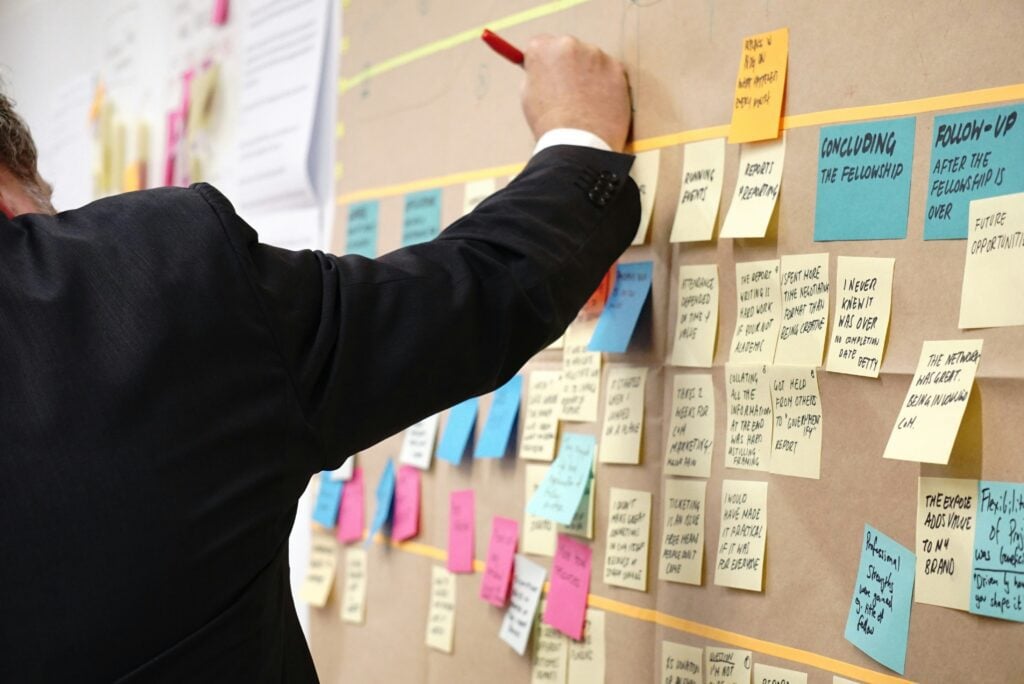90% of Product Failures Are Preventable
Product failure is almost never a single catastrophic event. It unfolds gradually, often hidden behind subtle signals that compound over time. According to research by CB Insights, 42% of startups fail because they misread market needs or fail to track user feedback effectively. Teams that focus purely on delivery without maintaining visibility into performance risk missing these signals until recovery becomes costly or impossible. In reality, most product failures can be avoided through proactive measurement, insight, and strategic intervention.
At Sonin, we have seen the same pattern across industries. A once-successful product begins to lose traction. Engagement drops, updates slow, and feedback goes unanswered. New features are added in response, but they add complexity instead of clarity. It is rarely one big mistake that causes failure; it is the slow erosion of user value.
Visibility creates control. Detecting decline early empowers you to act before momentum is lost.
What Failure Looks Like Before It’s Official
A failing product does not collapse overnight. Recognising early warning signs is what separates a proactive product team from a reactive one.
1. Declining Engagement
When active usage, task completion, or session length starts to trend down, the product is losing its appeal. Even small dips can signal a growing disconnect between user needs and delivered value.
2. Feature Bloat and Complexity
Adding features rarely solves engagement issues. Research shows that around 45 percent of software features are rarely or never used, yet they continue to consume resources and degrade user experience.
3. Ignored Feedback Loops
Support tickets, reviews, and analytics reveal valuable insights. When these signals are ignored or deprioritised, frustration builds. Small usability issues turn into systemic friction.
4. Misaligned Roadmaps
When short-term fixes or stakeholder requests dominate the roadmap, long-term product goals are sidelined. Strategy becomes reactive, and innovation stalls.
The earlier these red flags are spotted, the easier it becomes to stabilise and redirect the product.

Key Metrics and Signals to Watch
Sustainable products are built on measurement and adaptation. When decline begins, quantitative and qualitative signals will appear first. Monitoring both helps create a complete understanding of product health.
Quantitative metrics:
- User retention, churn, and session frequency
- Feature-level engagement and conversion rates
- Support request volume and negative sentiment trends
- Funnel progression and task success rates
Qualitative indicators:
- Patterns of user confusion or repeated complaints
- Declining satisfaction or Net Promoter Scores (NPS)
- Feedback indicating unclear value or onboarding friction
- Cross-team misalignment between product, design, and marketing
Numbers show what is happening; user stories explain why. Together, they provide the clarity needed to act decisively.
Sonin’s Perspective: Measuring, Learning, and Adapting
At Sonin, we view every product as a living system that must evolve to survive. Continuous measurement, learning, and optimisation are essential to keeping it healthy.
Through Discovery and Optimisation Workshops, we help teams uncover where their products are underperforming and identify areas for strategic improvement. Using rapid development methods, MVP-style validation, and AI-enhanced analytics, we test hypotheses, validate assumptions, and create measurable pathways to success. AI allows us to identify emerging usage trends, predict engagement drop-offs, and model the impact of proposed updates, transforming static data into predictive intelligence that informs decision-making.
We also implement ongoing product health reviews to ensure every release contributes directly to measurable outcomes. This proactive approach keeps teams aligned, focused, and ready to evolve.
The most successful products do not just adapt to change; they anticipate it through insight and innovation.
Using AI and Rapid Development to Revive Failing Products
When a product’s performance starts to decline, the ability to move quickly and intelligently becomes crucial. Emerging technologies like AI-driven analytics, predictive modelling, and automated sentiment analysis, combined with rapid code development (also known as vibe coding), make it possible to test ideas, measure impact, and validate new directions at unprecedented speed.
AI applications play a vital role in this process. Predictive analytics can forecast churn before it happens, anomaly detection can flag irregular engagement patterns, and automated A/B testing can identify high-performing design choices. Generative AI can even assist teams in creating and refining prototypes or simulating user responses, helping product owners gauge how proposed features will perform in real-world scenarios.
At Sonin, we leverage these capabilities to help businesses pivot quickly and strategically. By combining AI insights with iterative prototyping, we can explore multiple recovery paths simultaneously, identifying which changes will have the greatest impact before significant investment is made.
This combination of data-driven intelligence and rapid experimentation transforms how teams approach product recovery. It reduces risk, accelerates learning, and fosters innovation, turning potential decline into an opportunity for reinvention.

Taking Action: Preventing Decline Before It Starts
Recognising the signs of decline is only valuable if it leads to decisive action. Begin by evaluating your product against its original purpose. Does it still solve the same problem effectively? Does it still align with business strategy and user expectations?
Use these insights to prioritise improvements that deliver the highest return. Balance technical optimisation with user experience enhancements and measurable business outcomes.
Early action prevents crisis. More importantly, it transforms potential failure into a foundation for growth.
Final Thought
Every product is subject to decline. But decline is not the end; it is an early signal for change. With visibility, discipline, and a culture of continuous optimisation, any product can regain relevance and momentum.
At Sonin, we partner with organisations to strengthen and evolve their digital products through insight, experimentation, and innovation. The best time to fix a failing product is before it fails, but the second-best time is now.